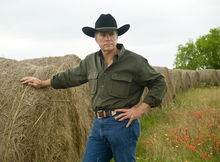In a study related to the benefits of soaking hay for horses with laminitis, COPD or heaves, hyperkalemic periodic paralysis, and polysaccaride storage myopathy, researchers at the University of Minnesota set out to determine the impact of water temperature and soaking duration on removal of non soluble carbohydrates (NSC), crude protein (CP), minerals, and dry matter (DM) from alfalfa and orchard grass hays.

Impact of hay soaking on horse health
Researchers determined the impact of water temperature and soaking duration on removal of non soluble carbohydrates, crude protein minerals, and dry matter from hay.
Prior to soaking, both alfalfa hays were below the 10 and 12% NSC recommended for horses diagnosed with Polysaccaride Storage Myopathy (PSSM) and laminitis, respectively, and would not have required soaking. This is common for alfalfa, since legumes store their carbohydrates as starch, compared to grasses that shore carbohydrates as fructans or sugars.
The orchard grass hays were above these recommendations; however, after soaking for 15 to 30 minutes, they were at or below 10 to 12% NSC.
Although soaking hay for longer durations did further reduce NSC content, it is not recommended. All horses, even diseased ones, require carbohydrates in their diet. The very low NSC content in hay soaked for greater than 1 hour, combined with increased fiber amounts brings into question the palatability and availability of nutrients in hay soaked for longer periods of time.
Owners should rely on forage analysis, both before and after soaking, as the primary method of determining the appropriate hay for horses, especially when feeding horses diagnosed with laminitis, PSSM, HYPP or COPD. For these horses, analysis of the NSC, P and mold content (for horses with COPD) of the forage is key.
Hay soaking for short durations (15 to 60 minutes in duration) is an acceptable management method, but should only be used if preferred hay is not available. Soaking hay for longer durations (i.e. 12 hours) resulted in very low NSC content, high calcium to phosphorus ratios, shortage of phosphorus in the diet, and high dry matter losses
The study found that soaked hay should be fed immediately to reduce the chance of mold.
The researchers also cautioned horse owners that care should be used when disposing of water used in soaking hay. Water should be disposed of in random grassy areas and should not be accessible to horses because of the high carbohydrate and nutrient content.
The study was done by K. Martinson, PhD; M. Hathaway; H. Jung, PhD and C. Sheaffer, PhD of the University of Minnesota.
Read more about nutrition for horses with special dietary needs
